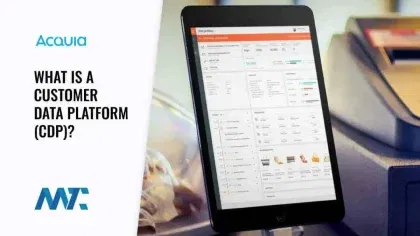
As customers communicate and create transactions with your business today, it’s getting more and more challenging to maintain a central view of the customer in real-time. I recently met with a client who was having just these difficulties. Their email marketing vendor differed from their mobile messaging platform outside their data repository. Customers were interacting, but because the central data wasn’t synchronized, messages were sometimes triggered or sent with bad data. This produced a larger demand for their customer service staff and irritated their clients. We are assisting them in re-architecting the system utilizing a different messaging API that will maintain data integrity.
That’s just a few channels that are causing an issue. Imagine a multi-location chain with customer loyalty, retail transactions, social interactions, customer service requests, billing data, and mobile interactions. Add to that the reconciliation of marketing responses via omnichannel data sources… yikes. This is why Customer Data Platforms (CDPs) have evolved and are gaining traction in the enterprise space.
CPDs enable a corporation to integrate and map data from hundreds of sources, analyze the data, create predictions based on the data, and better and more accurately engage with customers across any channel. It’s a 360-degree view of the customer.
What is a CDP?
A customer data platform is an integrated customer database managed by marketers that unifies a company’s customer data from marketing, sales and service channels to enable customer modeling and drive customer experience.
Gartner, Hype Cycle for Digital Marketing and Advertising
According to the CDP Institute, a Customer Data Platform has three critical elements:
- A CDP is a marketer-managed system – the CDP is built and controlled by the marketing department, not the corporate Information Technology department. Some technical resources will be required to set up and maintain the CDP, but it does not require the technical skill of a typical data warehouse project. What matters is that marketing decides what goes into the system and what it exposes to other systems. In particular, marketing can make changes without asking anyone’s permission, although it may still need outside help.
- A CDP creates a persistent, unified customer database – the CDP creates a comprehensive view of each customer by capturing data from multiple systems, linking information related to the same customer, and storing the information to track behavior over time. The CDP contains personal identifiers used to target marketing messages and track individual-level marketing results.
- A CDP makes that data accessible to other systems – data stored in the CDP can be used by other systems to analyze and manage customer interactions.
Acquia CDP
As marketers are impacted more and more by the entire customer experience, centralizing their customer data across channels, across touchpoints, and the duration of their customer life cycle is becoming essential. Acquia is a leader in this industry, and its CDP offering:
- Data Integration – integrate all your data, in any format, from any data source across digital and physical channels with over 100 pre-built connectors and APIs.
- Data Quality – standardize, dedupe, and assign attributes such as gender, geography, and change of address for all customers. With identical and fuzzy matching, AgilOne links all customer activities to a single customer profile even if there is only a partial name, address, or email match. Customer data is updated continuously so it always includes the freshest data.
- Predictive Analytics – self-learning predictive algorithms that inform analytics and help you better engage with customers. AgilOne provides over 400 out-of-the box business reporting metrics enabling marketers to easily create and define any criteria they want for reporting and action within the application – without custom coding.
- 360-Degree Customer Profiles – build a complete omni-channel profile for your customers, combining such data as the individual customer journey, website and email engagement, past omni-channel transaction history, demographic data, product preference and recommendations, likelihood to buy, and predictive analytics, including likelihood to buy and clusters this customer belongs to. These profiles strategically inform where to invest, how to personalize, and how to make your customers happy.
- Omni-Channel Data Activation – within a centralized interface, marketers can also design and launch social, mobile, direct mail, call center, and store campaigns directly, while making audiences, recommendations, and any other data extract, available to any tool within your marketing ecosystem.
- Orchestrated Personalization – coordinate personalized messaging, content, and campaigns across digital and physical channels, providing marketers a consistency of voice no matter when or where a customer engages. AgilOne also gives marketers the certainty that they are delivering the right message to each person, since AgilOne ensures all personalization is based on one, clean, standardized customer database of record.